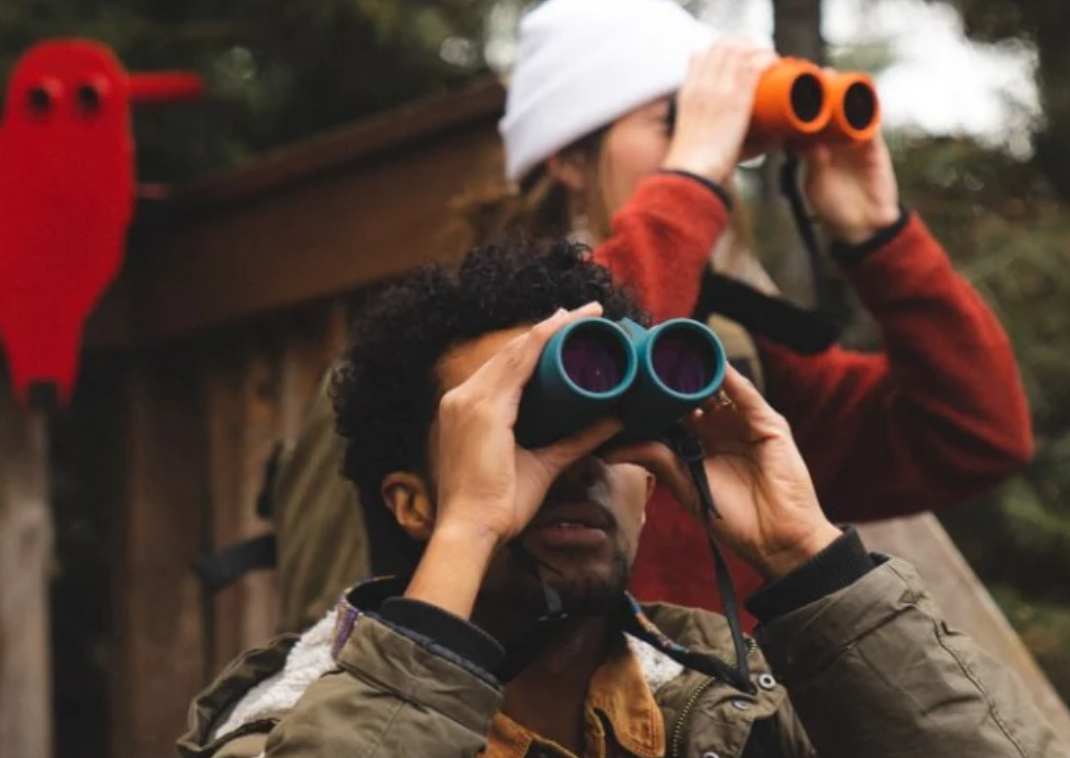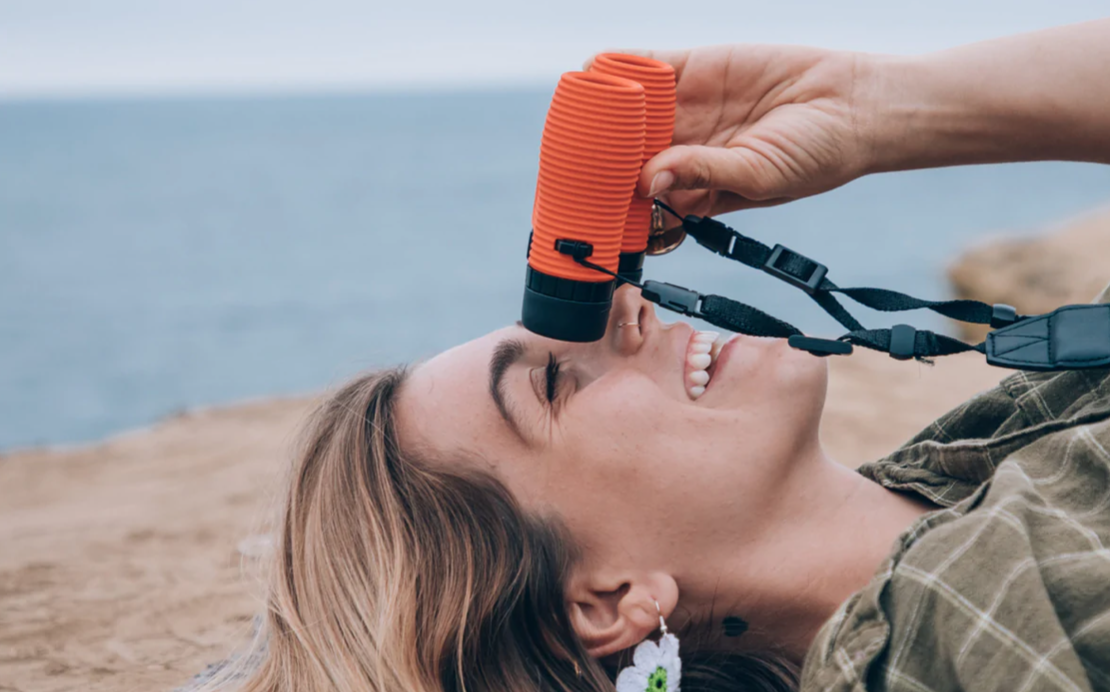
How to Choose and Use the Best Binoculars for Kids (and Parents) Who Love the Outdoors
According to the Experts at Nocs Provisions
When you bring along a pair of binoculars or a monocular when you’re out for a hike, a boat trip, or camping with the family, you can bring so much of the natural world into much better of a view, and in so doing you can make nature tangible and memorable for your kids. That distant deer becomes a living, breathing (and charming) animal rather than a faint tan-colored shape in the woods. A faraway mountain top becomes a beautiful contrast of snow and rock instead of a vaguely gray pointy thing. A soaring falcon’s grace is seen up close. A waterfall becomes countless cascading drops instead of a formless flow. And as for that bear? Yeah, that’s better seen from afar.
Long story short, it’s great to bring binoculars along with you whenever you get out there, but what’s not so great is choosing the right pair (or opting for a monocular) given your activities, your kids’ ages, gear weight considerations and more. To help you choose the best binoculars for kids (and moms and dads), Dad Gear Review talked to a couple of experts. We checked in with Chris McKelroy, the founder and CEO of Nocs Provisions, and with Rachel Van Schoik, the Science Action Club Program Manager at the California Academy of Sciences.
What hobbies and outdoor activities can be made more fun and fulfilling when you have binoculars along?
“It's amazing how many outdoor activities can be enhanced by having a pair of binoculars,” said Chris McKleroy, adding: “Camping is one activity. It’s great to have binoculars when traveling to a new place as well. Sporting events like baseball games and football games or even bike races are enhanced by having a pair of binoculars. A lot of my friends who ride bikes keep a monocular or binocular on hand so we can get a closer view when they reach a giant lookout or see wildlife. And of course surfing and backcountry skiing can be enhanced by being able to understand conditions much better from afar. The goal with the design and compact form factor of Nocs was to have the binocular be a seamless part of the outdoor experience.”
What are the benefits or drawbacks of using binoculars vs. a monocular?
“Binoculars are great because you can have both eyes open simultaneously, creating a more three-dimensional effect, and you can use them for an extended period of time,” McKleroy said. “Monoculars are great because they're lightweight and easy to pack, and are a great tool for quick views and scouting the environment.”




What is a common mistake people make when using binoculars? And some tips?
“Common mistakes include buying binoculars that are too big and never using them,” said McKelroy. “And not really a mistake, but a pro tip that makes using binoculars more fun in the field and can be a bit tricky: When you first spot something with the naked eye keep your eyes locked on what you're looking at and bring the binoculars up to your eyeballs to maintain your line of sight. It’s a simple technique to remedy losing sight of what you’re looking at.”
At what age can a child be expected to use this type of hardware properly?
"There is no age too young to start using binoculars to encourage youth to observe nature and birds around them,” said Rachael Van Schoik, adding: “Caregivers can practice using binoculars or monoculars first with youth while indoors. Set up a stationary object — a stuffed animal or picture of a bird — at the end of a hallway to practice looking through the lens, adjusting settings, and seeing the objects. On nature walks, explore ways kids can stealthily approach wildlife to observe them. Much like adults when they are bird watching, practice makes perfect, so it's essential to encourage youths to use these skills over and over. As you train and empower kids to use scientific tools like binoculars accurately, you are fostering the growth of their very own STEM identity that they will carry on throughout life."
Adding his thoughts to the question, McKelroy said: “There's an entire category of kids' binoculars that are low quality, made with cheap material, and hard to look through. I believe this poor experience leads kids to think that binoculars are just cheap toys. With Nocs, we are able to give kids that ‘wow’ feeling, democratizing good optics in a compact form factor that can be held by kids and adults alike. The quality you experience is what makes using binoculars so compelling and fun. Often big and expensive binoculars are able to do this, but due to the size and cost these are often left at home. I think cheap binoculars dissuade kids and adults from using binoculars in the future. It’s the wow factor — the culmination of an easy-to-use form factor and great optics that makes the product disappear from the experience and connects the person with their natural environment.”
What sets Nocs binoculars (and monoculars) apart from others?
“The high-quality glass in a compact form factor, with easy to use optics, a strong and ergonomically outer grip, and bright colors at an accessible price make Nocs products special,” Chris McKelroy answered. “But aside from products, we also approach things from an entirely different angle — it’s all about people using what we design in the field. We want the binoculars to be put in backpacks, on dashboards, in pockets, hung from a tree branch at the campsite, to be taken along for the ride, beat up and used and enjoyed. That’s what this is all about — getting more people out there exploring the outdoors, whether that’s a National Park or their backyard. As a brand we’re really focused on that and it manifests through our optics.”
photos c/o Nocs Provisions
